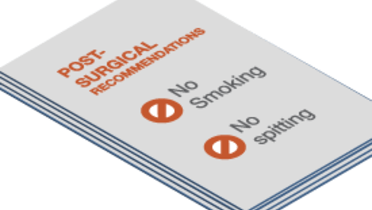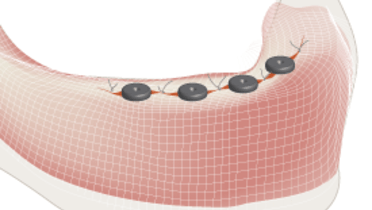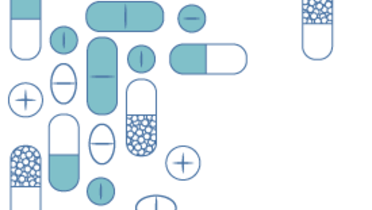-
0
Patient Assessment
- 0.1 Patient demand
- 0.2 Overarching considerations
- 0.3 Local history
- 0.4 Anatomical location
- 0.5 General patient history
-
0.6
Risk assessment & special high risk categories
- 5.1 Risk assessment & special high risk categories
- 5.2 age
- 5.3 Compliance
- 5.4 Smoking
- 5.5 Drug abuse
- 5.6 Recreational drugs and alcohol abuse
- 5.7 Parafunctions
- 5.8 Diabetes
- 5.9 Osteoporosis
- 5.10 Coagulation disorders and anticoagulant therapy
- 5.11 Steroids
- 5.12 Bisphosphonates
- 5.13 BRONJ / ARONJ
- 5.14 Radiotherapy
- 5.15 Risk factors
-
1
Diagnostics
-
1.1
Clinical Assessment
- 0.1 Lip line
- 0.2 Mouth opening
- 0.3 Vertical dimension
- 0.4 Maxillo-mandibular relationship
- 0.5 TMD
- 0.6 Existing prosthesis
- 0.7 Muco-gingival junction
- 0.8 Hyposalivation and Xerostomia
- 1.2 Clinical findings
-
1.3
Clinical diagnostic assessments
- 2.1 Microbiology
- 2.2 Salivary output
-
1.4
Diagnostic imaging
- 3.1 Imaging overview
- 3.2 Intraoral radiographs
- 3.3 Panoramic
- 3.4 CBCT
- 3.5 CT
- 1.5 Diagnostic prosthodontic guides
-
1.1
Clinical Assessment
-
2
Treatment Options
- 2.1 Mucosally-supported
-
2.2
Implant-retained/supported, general
- 1.1 Prosthodontic options overview
- 1.2 Number of implants maxilla and mandible
- 1.3 Time to function
- 1.4 Submerged or non-submerged
- 1.5 Soft tissue management
- 1.6 Hard tissue management, mandible
- 1.7 Hard tissue management, maxilla
- 1.8 Need for grafting
- 1.9 Healed vs fresh extraction socket
- 1.10 Digital treatment planning protocols
- 2.3 Implant prosthetics - removable
-
2.4
Implant prosthetics - fixed
- 2.5 Comprehensive treatment concepts
-
3
Treatment Procedures
-
3.1
Surgical
-
3.2
Removable prosthetics
-
3.3
Fixed prosthetics
-
3.1
Surgical
- 4 Aftercare
Post-operative care
Key points
- Post-surgical appointments should be planned together with surgery appointment
- The main objectives of post-operative care include control of the healing of the surgical site and evaluation of interim-provisionalization (if provided)
- In case of delayed loading check all prosthetic components and healing components
- At the first post-operative appointment check closely for signs of inflammation and paresthesia
Considerations
The main objectives of post-operative care include control of the healing of the surgical site and identifying risks which could affect healing and, where pertinent, osseointegration. In addition, post-operative visits provide the opportunity to evaluate the functional and esthetic attributes of provisional prostheses.
Some general recommendations regarding post-operative care are provided below. However, the exact timing and frequency of post-operative visits should be established on an individual patient basis.
Day 1, 2 or 3 after surgery
- General health condition of patient; how does the patient feel?
- Evaluation of the wound: suture condition, color of the soft tissues, bleeding, pain, swelling and other signs of inflammation
- Has full return of sensation taken place or does paresthesia persist?
- Atraumatic wound cleansing and disinfection
- Re-iteration of oral hygiene measures but not of surgical field
- If not done on day of surgery, atraumatic insertion of the provisional prosthesis
Day 7–14 after surgery
- General health condition of patient; how does the patient feel?
- Evaluation of the wound: color of the soft tissues, bleeding, pain, swelling and other signs of inflammation
- Evaluation of signs and symptoms of infection
- Non-resorbable suture removal and assessment of soft tissues
- Debris removal in wound area (if necessary)
- Check of all prosthetic components and healing/temporary components
- Check of fit and function/occlusion of provisional prostheses. Adjustments and soft relining of denture may be needed.
- In case of a delayed loading protocol it is helpful to ensure that the provisional prosthesis sits freely around implants and loading is minimal
- If needed re-instruction of patient about oral hygiene measures also of surgical area
Week 4-6 after surgery
- Evaluation of the soft tissue condition and potential inflammation/infections signs
- Re-evaluation of provisional prosthesis and check of prosthetic components and healing/temporary components
- Check of fit and function/occlusion of provisional prostheses. It may be necessary to replace the soft reline material in the provisional prosthesis
- Control of provisional denture and adjustment as necessary in order to ensure that the provisional prosthesis sits freely around implants and loading is minimal
- If needed, re-instruction of patient regarding hygiene measures
- Further timing for definitive prosthetic rehabilitation and/or recall visits
Clinical topics
Related articles
Additional external resources
Questions
Ask a question
Log in or sign up to continue
You have reached the limit of content accessible without log in or this content requires log in. Log in or sign up now to get unlimited access to all FOR online resources.
No payments necessary - FOR is completely free of charge.



